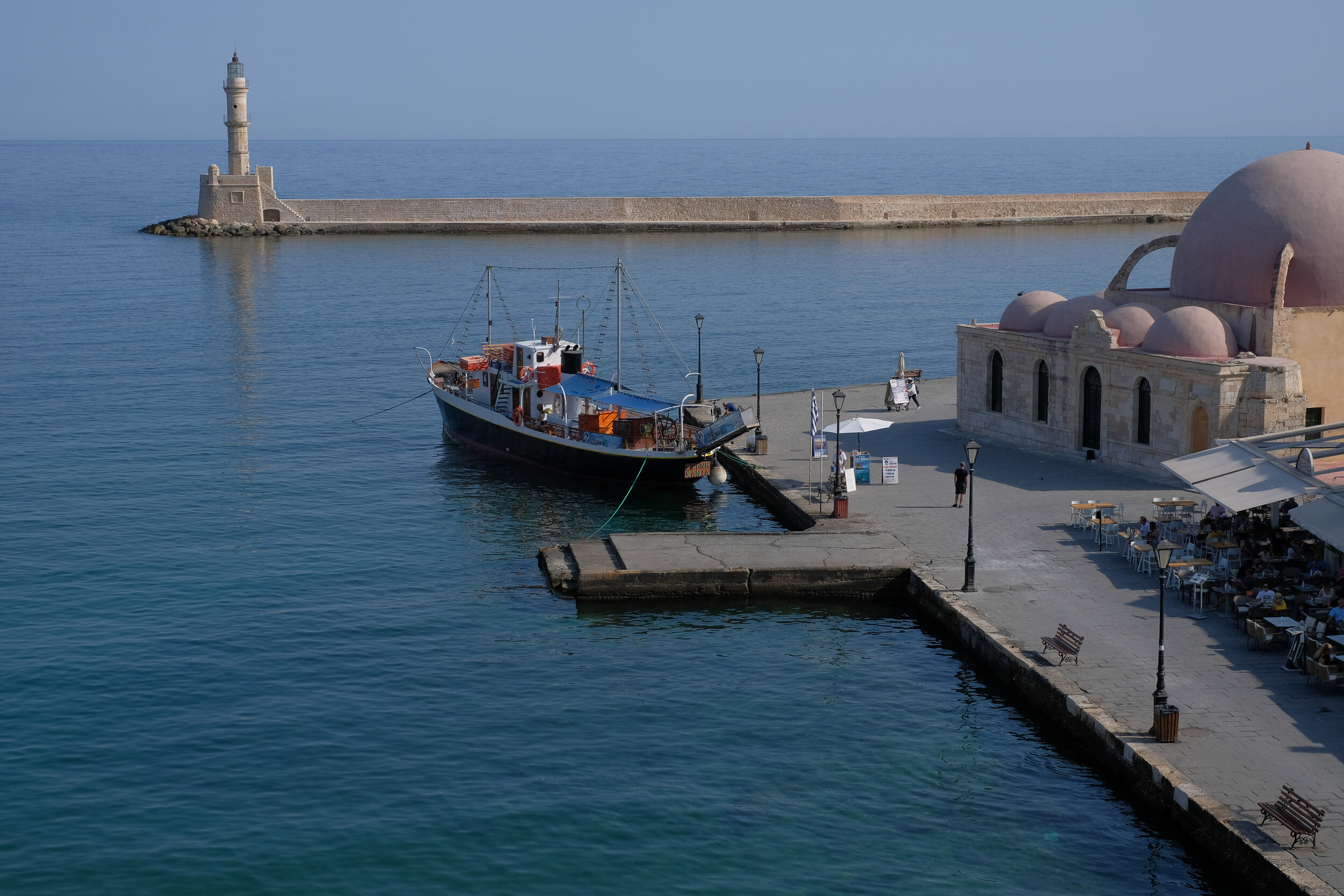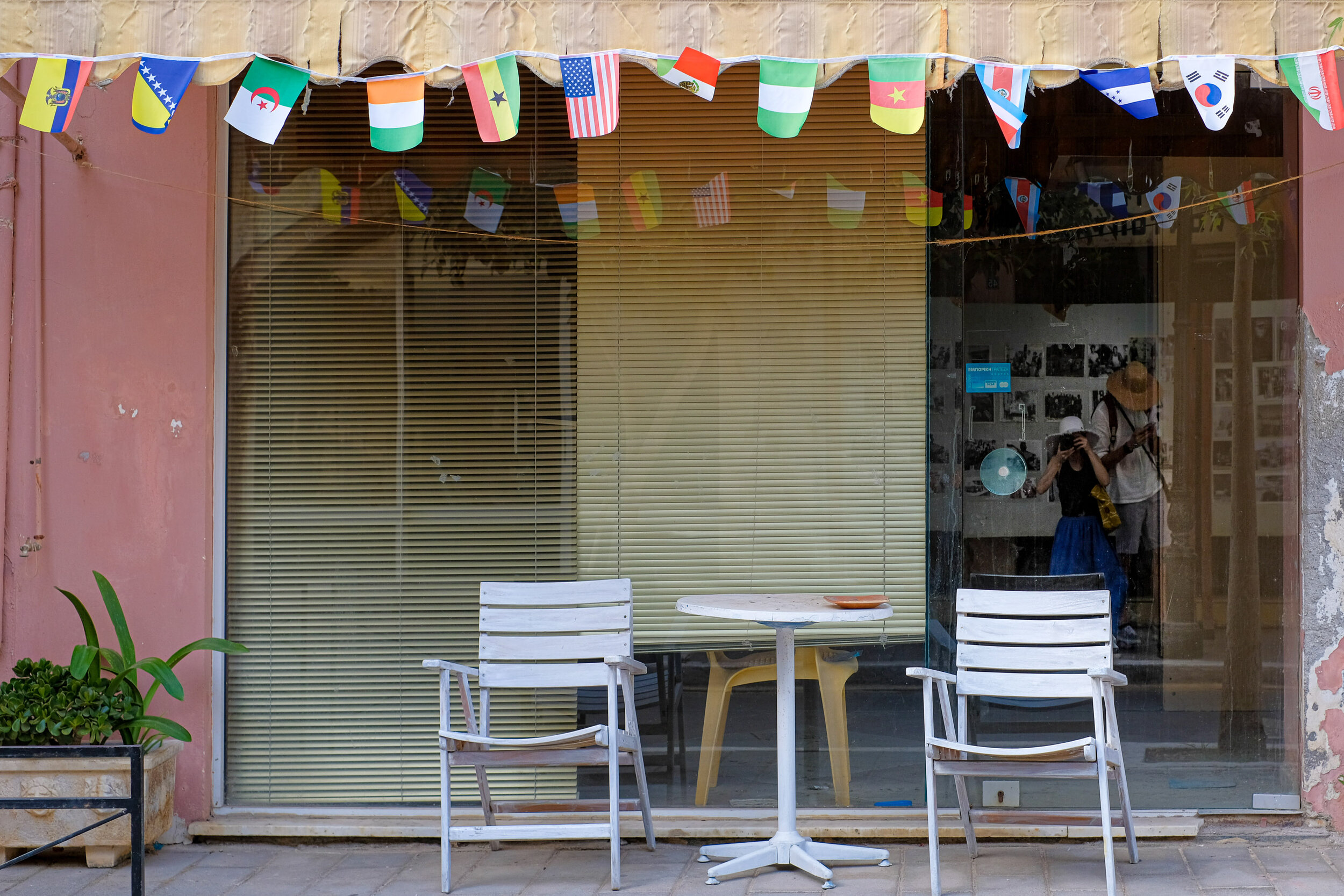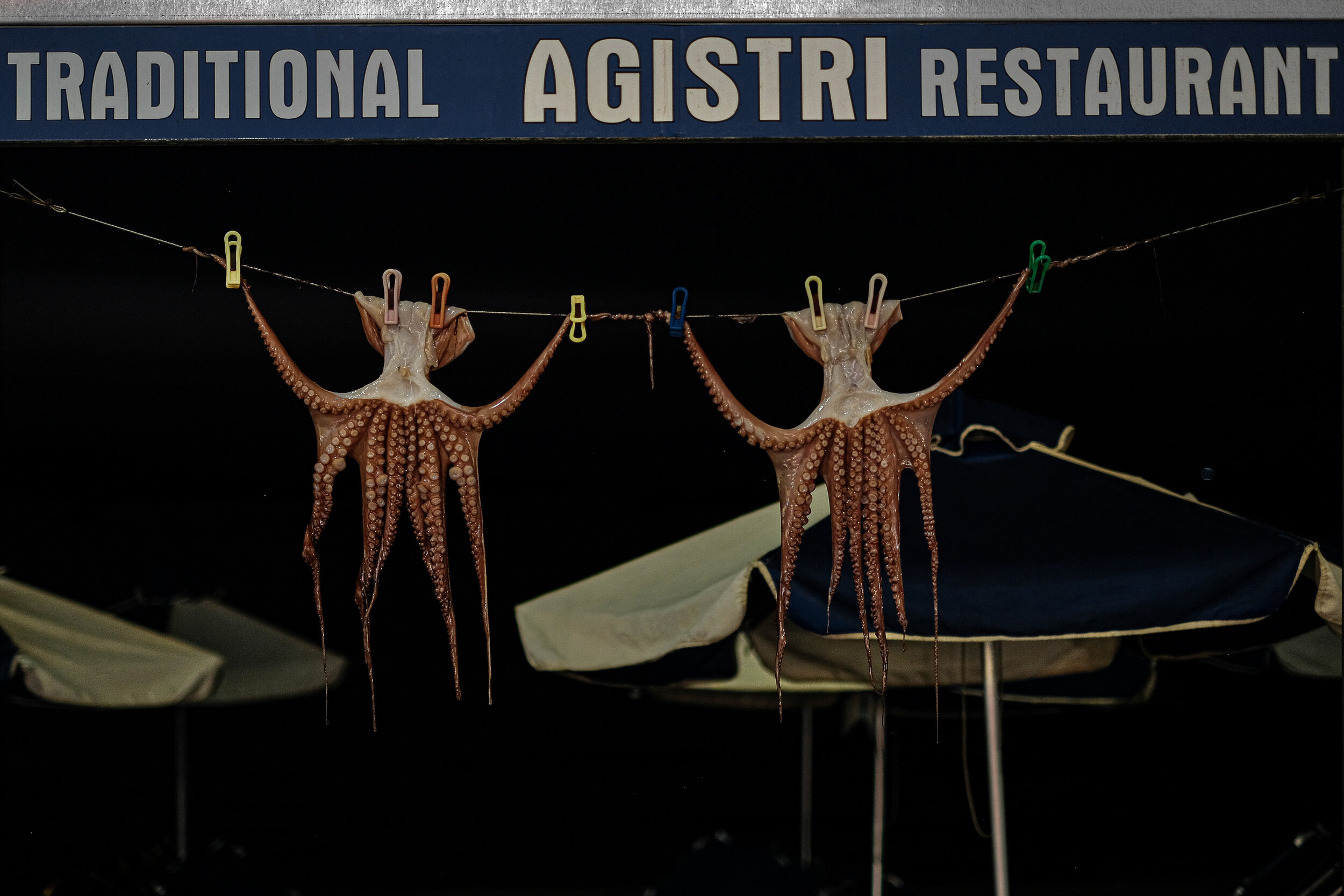Our week in Crete was as complicated as it was enlightening, because 37° heat during a pandemic makes for challenging travels, even with blue skies and turquoise seas all around. Nevertheless, bodies were bared, a sea was explored, figs were eaten straight from the tree, crowds were avoided, and amazement was found. (What amazed most memorably was the unthinkably long line of parked cars stretching along the rocky path leading to the parking lot above the famed Balos Lagoon. Having been among the diligent elite who drove up this bumpy road at dawn, my companion and I could not believe our sun-seared eyes as we drove away, our rental car rattling down as more and more tourists rattled up along the clean cliffside drop into the Cretan Sea, every last one doomed to a midday-heat trek of unimaginable scale—and that’s even before they embarked on the exhausting half-hour scenic hike down to the beach from the parking lot.)
But postcards are for looking, not for reading, are they not? Their function is the phatic function—thinking of you, what a time we’ve been having, Cretan food is a lot like Polish food, August needs a blog post, and all that. So let’s get to it!
All photos were taken in August, 2021, with the Fujifilm X-T20 and the Fujinon 35mm f/1.4 lens. (Given the Fuji’s crop factor, this is functionally a standard lens, which is a somewhat challenging choice for me in a leisure/travel context. Why? Because it has neither the width that best showcases a landscape nor the reach that best isolates details. It is, however, also the most compact and lightweight lens in my kit, plus it is sufficiently fast for use in all lighting conditions. For a comparison with the way the Fujinon 23mm f/1.4 sees things, take a look at my photos from Portugal. And if that was interesting, check out another Portugal post from one year later to discover how the Fujinon 56mm f/1.2 paints the world.)

















